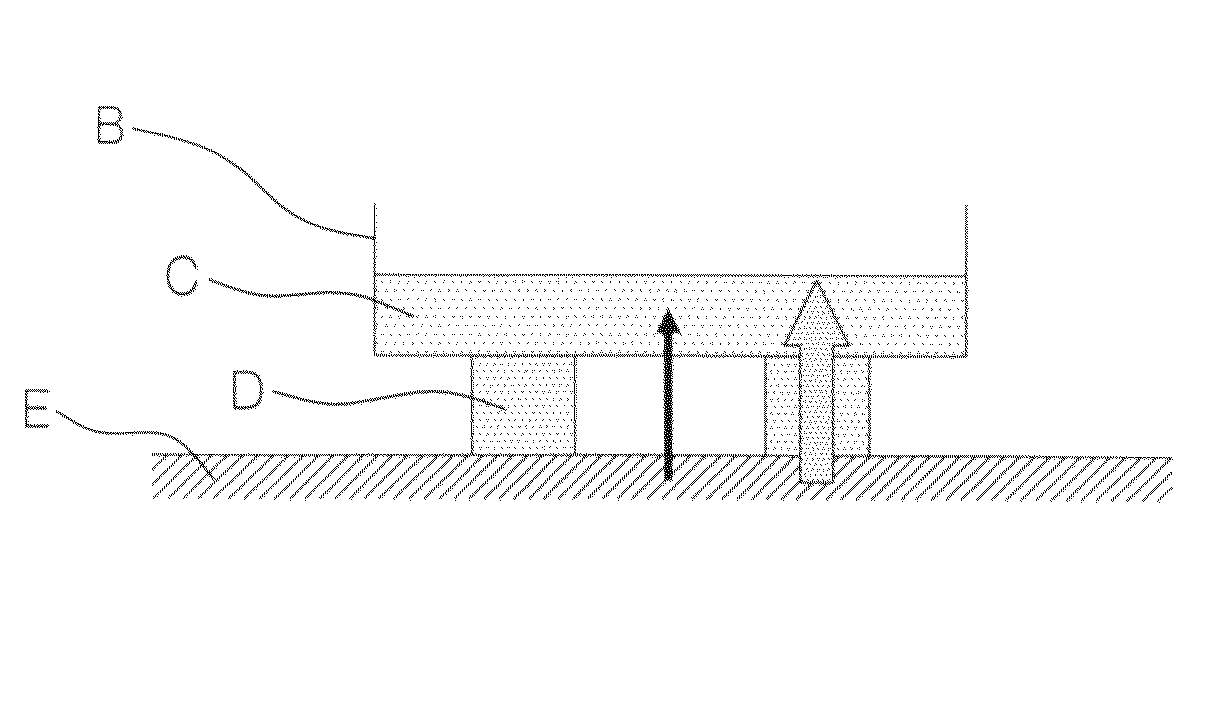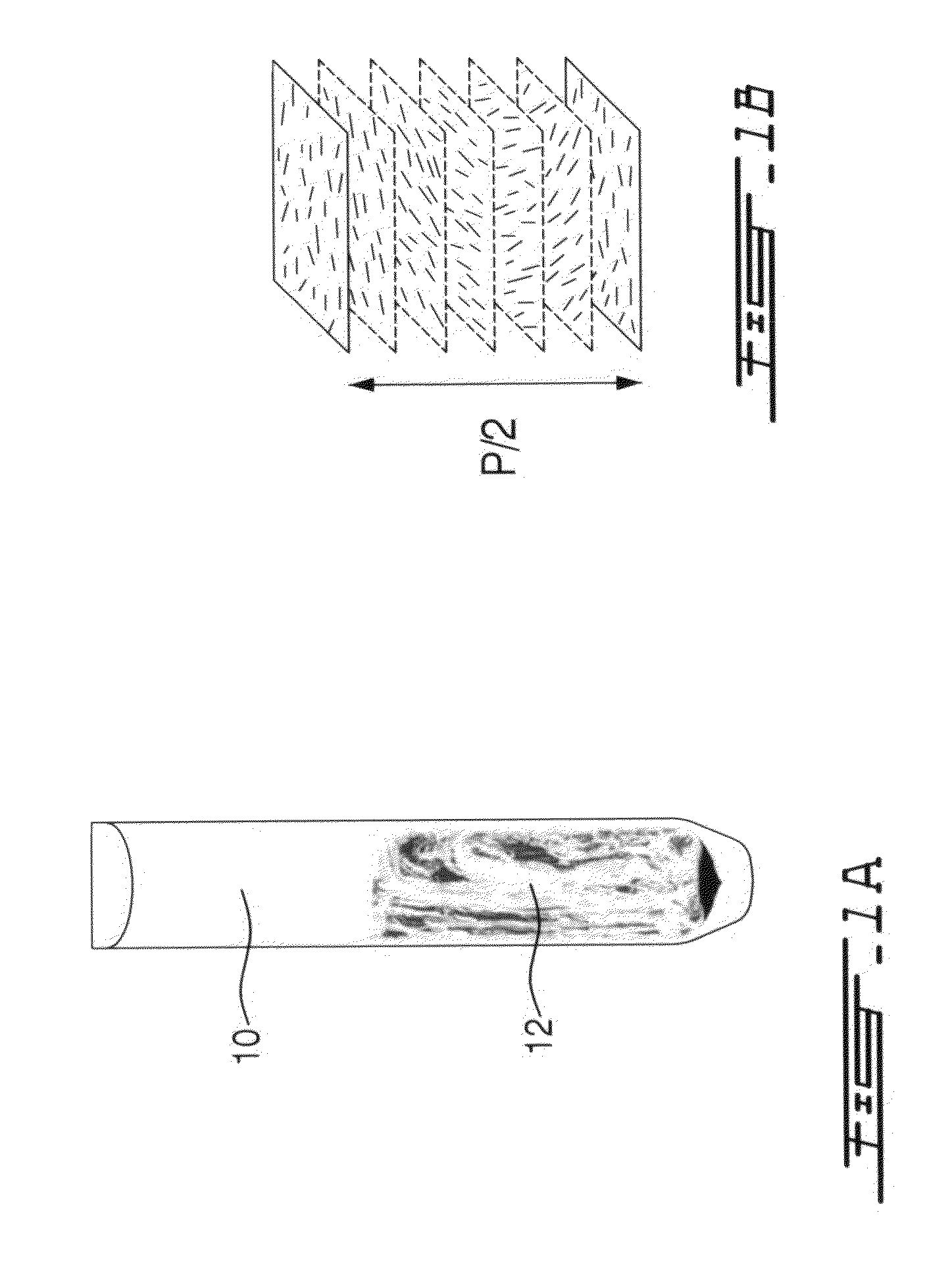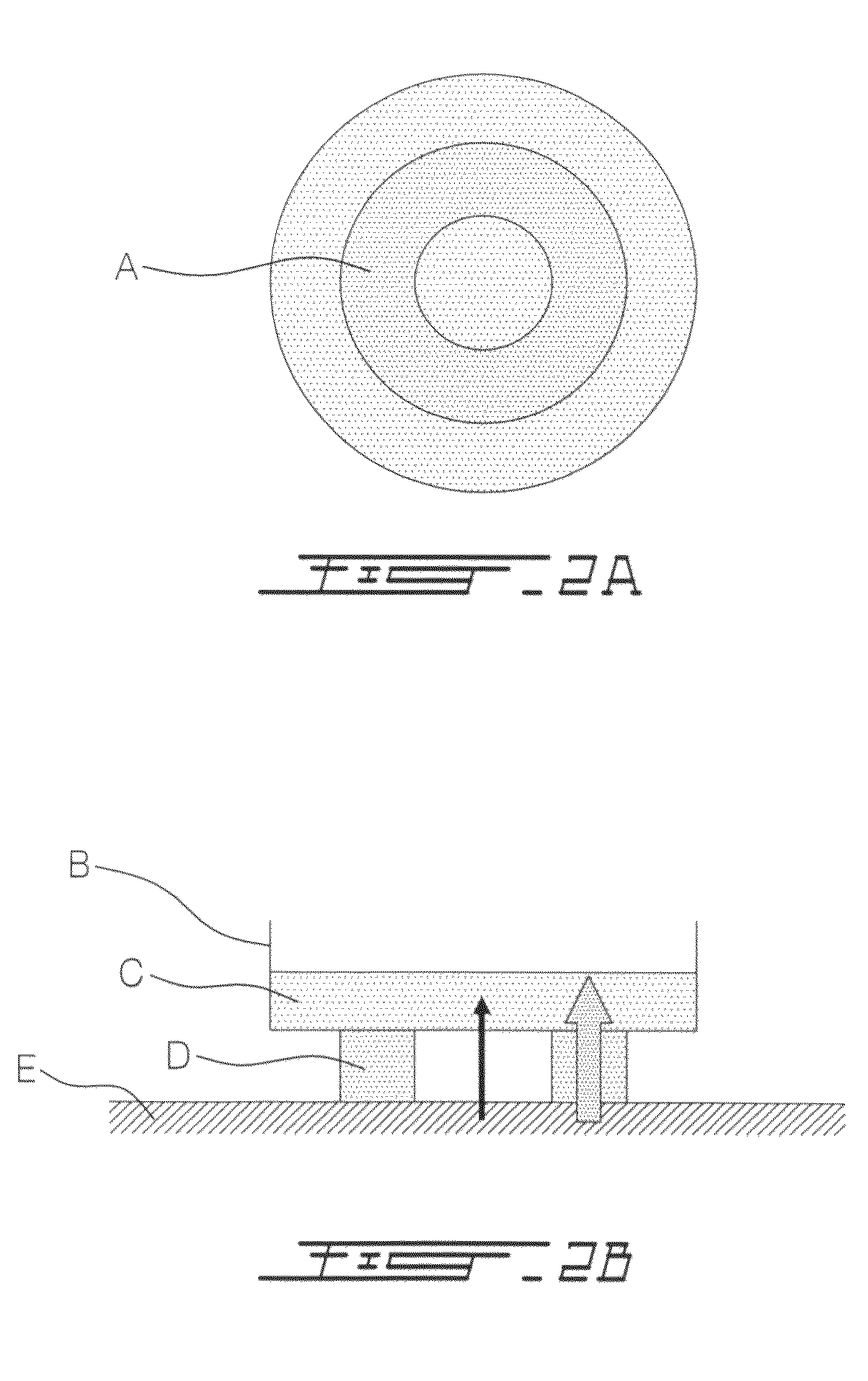Method for producing iridescent solid nanocrystalline cellulose films incorporating patterns
a technology of solid nanocrystalline cellulose and iridescent light, which is applied in the direction of nanotechnology, decoration arts, applications, etc., can solve the problem of counterproductive further sonication
- Summary
- Abstract
- Description
- Claims
- Application Information
AI Technical Summary
Benefits of technology
Problems solved by technology
Method used
Image
Examples
example 1
Patterned NCC Film Displaying Logo
[0074]A 15-mL aliquot of 2.6% (w / w) Na—NCC suspension containing 3.5% poly(vinyl alcohol) (PVA) w / w relative to NCC, was sonicated to 600 J (1540 J / g NCC). A film was created by heating the suspension to 60° C. in a 9-cm diameter polystyrene Petri dish with a metal wire 2.4 mm in cross-sectional diameter (FIG. 3A) placed underneath. The resulting film displays a distinct pattern (FIG. 3B); the pattern itself is orange-yellow while the surrounding areas are yellow-green to blue. This demonstrates the sensitivity of the method, as the area of direct contact between the wire and the Petri dish is minimal.
example 2
Thickness of Patterned NCC Films
[0075]Films were created by heating 15-mL samples of 2.6% (w / w) Na—NCC suspensions (sonicated between 500 to 800 J) containing 0 to 2.4 to 5% PVA (w / w relative to NCC) at temperatures from 45-60° C. over steel washers. The thickness of different areas of the films was measured with a digital micrometer. The thickness of the differently-coloured areas in the films appears to vary with wavelength of reflection, longer wavelengths corresponding to thicker regions. In FIG. 4A, the average thickness of the center (blue in colour) is 67 μm, while the average thickness of the ring (orange) is 85 μm; locations a, b and c have thicknesses of 67, 101 and 59 μm, respectively. In FIG. 4B, the average thicknesses of the center (blue-green), inner ring (yellow), outer ring (greenish yellow) and the narrow region immediately surrounding the ring (blue) are 69, 82, 74 and 66 μm, respectively; locations d, e and f have thicknesses of 69, 82 and 64 respectively. The di...
example 3
Colour and Thickness of Films Produced by Heating NCC Suspensions
[0076]A temperature differential induced by areas of differing thermal conductivity is not necessary to produce differences in NCC film colour. NCC films produced by heating also show colour shifts towards longer wavelengths when compared to films produced at lower temperatures. For example, a red-shift from 450 nm to 470 nm peak wavelength of reflection (with angles of incidence and reflection of 45 degrees) is observed when an Na—NCC film is produced at 45° C. and 60° C., respectively. A red-shift from 440 to 470 nm is also observed when a film is produced by heating over metal as compared to plastic at 60° C.; the film heated over metal is also measurably thicker than that heated over plastic.
PUM
| Property | Measurement | Unit |
|---|---|---|
| temperature | aaaaa | aaaaa |
| aspect ratio | aaaaa | aaaaa |
| length | aaaaa | aaaaa |
Abstract
Description
Claims
Application Information
 Login to View More
Login to View More - R&D
- Intellectual Property
- Life Sciences
- Materials
- Tech Scout
- Unparalleled Data Quality
- Higher Quality Content
- 60% Fewer Hallucinations
Browse by: Latest US Patents, China's latest patents, Technical Efficacy Thesaurus, Application Domain, Technology Topic, Popular Technical Reports.
© 2025 PatSnap. All rights reserved.Legal|Privacy policy|Modern Slavery Act Transparency Statement|Sitemap|About US| Contact US: help@patsnap.com



